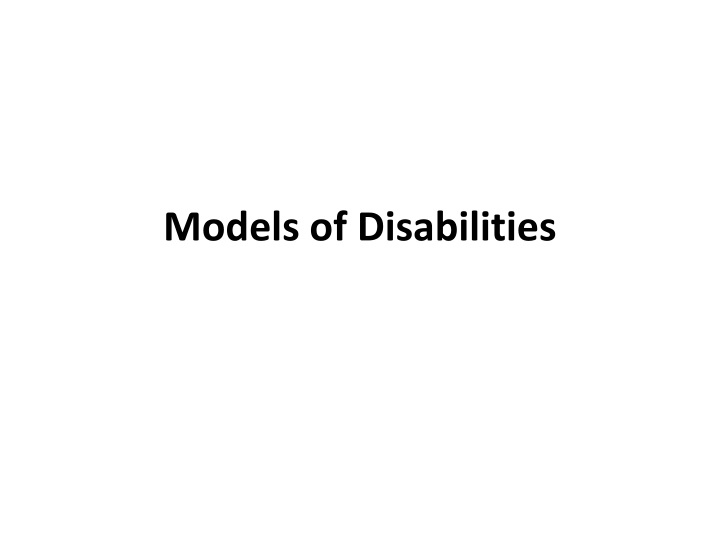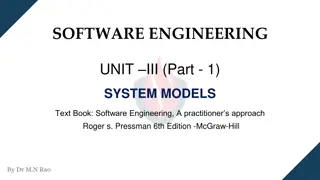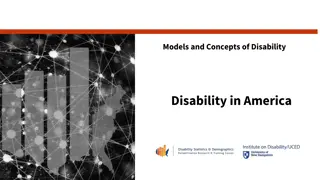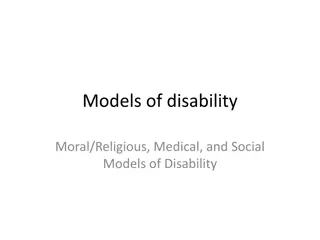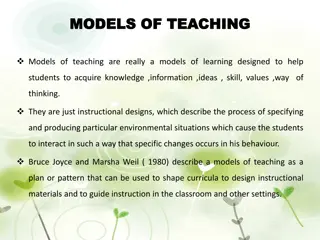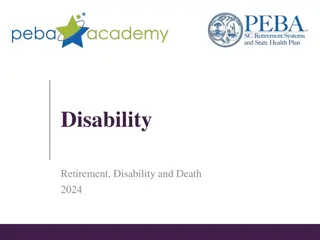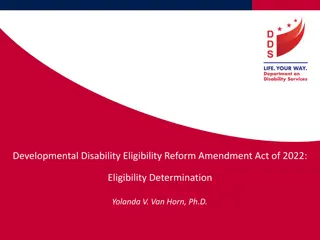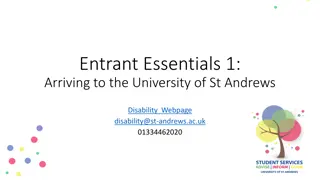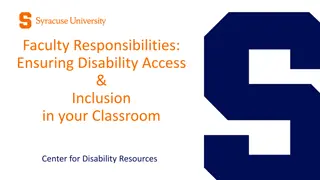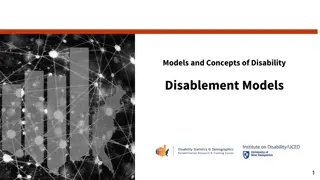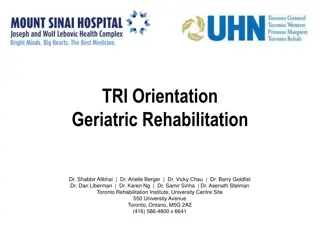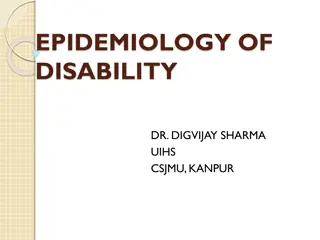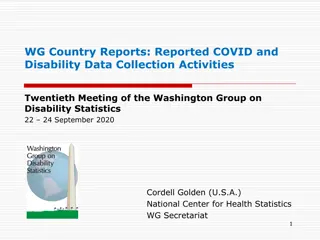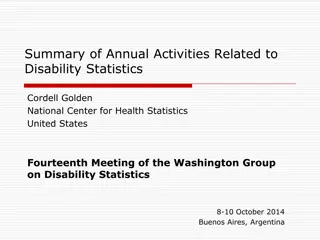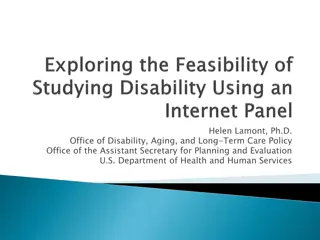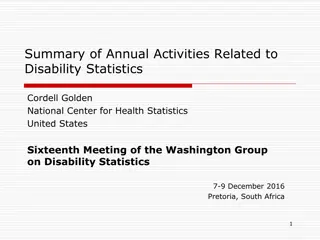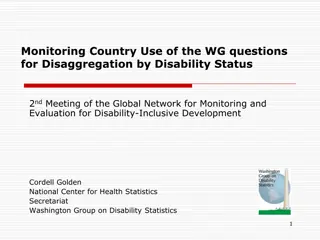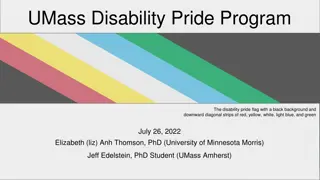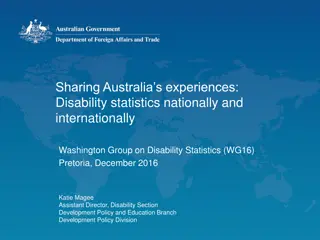Models of Disability: Perspectives and Implications
The moral model of disability attributes disabilities to moral responsibility, while the medical model views them as diseases to be cured. Explore the contrasting viewpoints and societal influences shaping attitudes towards disabilities.
Download Presentation

Please find below an Image/Link to download the presentation.
The content on the website is provided AS IS for your information and personal use only. It may not be sold, licensed, or shared on other websites without obtaining consent from the author.If you encounter any issues during the download, it is possible that the publisher has removed the file from their server.
You are allowed to download the files provided on this website for personal or commercial use, subject to the condition that they are used lawfully. All files are the property of their respective owners.
The content on the website is provided AS IS for your information and personal use only. It may not be sold, licensed, or shared on other websites without obtaining consent from the author.
E N D
Presentation Transcript
The Moral Model of Disability It refers to the attitude that people are morally responsible for their own disability. It is the oldest Model / pattern for understanding disability. Based in religious mythology, it viewed disability as a result of sin and shame. For example, the disability may be seen as a result of bad actions of parents if congenital (Inherited), or as a result of committed magic if not. This can be seen in the doctrine of karma in Indian religions.
The Moral Model of Disability. Karma Religion causative law by which good or bad actions determine the future modes of an individual s existence. (which means act, action) in Indian and Philosophy, the universal
The Medical Model of Disability: The Medical Model of disability emerged as science took over from religion in the explanation of natural phenomena. Under this model, disabilities are seen as 'diseases' or 'illnesses' to be cured by doctors.
The medical model is presented as viewing disability as a problem of the person, directly caused by disease, trauma, or other health condition which therefore requires sustained medical care provided in the form of individual treatment by professionals. In the medical model, management of the disability is aimed at a "cure," or the individual s adjustment and behavioral change that would lead to an "almost-cure" or effective cure. In the medical model, medical care is viewed as the main issue, and at the political level, the principal response is that of modifying or reforming healthcare policy.
Medical model of disability Under this model, these impairments or differences should be 'fixed' or changed by medical and other treatments. The medical model looks at what is 'wrong' with the person, not what the person needs. Society focuses on compensating impairments for what is wrong with their bodies. It creates low expectations and leads to people losing independence, choice and control in their own lives. The medical model of disability says people are disabled by their impairments or differences. people with
This medical model approach is based on a belief that the difficulties associated with the disability should be accepted wholly by the disabled person. And that the disabled person should make extra effort (perhaps in time and/or money) to ensure that they do not inconvenience to anyone else.
In the medical model, disability is understood as an individual problem. If somebody has an impairment a visual, mobility or hearing impairment, for example their inability to see, walk or hear is understood as their disability.
According to the medical model of disability, disability is a health condition dealt with by medical professionals. Disability is seen 'to be a problem of the individual. From the medical model, a person with disability is in need of being fixed or cured. From this point of view, disability is a tragedy and people with disability are to be empathized.
Some results: Rejection by family, Neighbors, Isolation from non-disabled peers, Restricted options for development, growth Restricted Social relationships, Neglect and abuse.
The medical model of disability views disability as a problem that belongs to the disabled individual. It is not seen as an issue to concern anyone other than affected. For example, if a wheelchair using student is unable to get into a building because of some steps, the medical model would suggest that this is because of the wheelchair, rather than the steps. the individual
Social Model of Disability: The Social Model of Disability see the issue of "disability" as a socially created problem and a matter of the full integration of individuals into society. In this model, disability is not an attribute of an individual, but rather a complex collection of conditions, many of which are created by the social environment. Contd
The management of the problem requires social action and is the collective responsibility of society at large to make the environmental modifications necessary participation of people with disabilities in all areas of social life. The issue is both cultural and ideological, requiring individual, community, and large-scale social change. From this perspective, equal access for someone with an impairment/disability is a human rights issue of major concern. for the full Contd
The Social Model of Disability makes the important difference between impairment and disability . These barriers include people s attitudes to disability, and physical and organizational barriers. Contd
The social model of disability says that disability is caused by the way society is organized, rather than by a person s impairment or difference. It looks at ways of removing barriers that restrict life choices for disabled people. When barriers are removed, disabled people can be independent and equal in society, with choice and control over their own lives. Contd
The social model sees disability is the result of the interaction between people living with impairments and an environment filled with physical, attitudinal, communication and social barriers. It therefore carries the implication that the physical, attitudinal, communication and social environment must change to enable people living with impairments to participate in society on an equal basis with others. Contd
The social model seeks to change society in order to accommodate people living with impairment; it does not seek to change persons with impairment to accommodate society. It supports the view that people with disability have a participating citizens on an equal basis with others. right to be fully Contd
This model draws on the idea that it is society that disables designing everything to meet the needs of the majority of people who are not disabled. There is a recognition within the social model that there is a great deal that society can do to reduce, and ultimately remove, some of these disabling barriers, and that this task is the responsibility of society, rather than the disabled person. people, through Contd
The social model is about the barriers that disabled people face. For example, if a wheelchair-user cannot climb stairs, then a ramp or a stair lift should be fitted. If a blind person cannot read written information then the solution is to provide it in an alternative format such as audio or braille. Contd
Some results: In the way society defines & conceptualizes disability, To the way disability is measured and counted, To the design and conduct of research, From an emphasis on services to an emphasis on support.
The empowering Model of Disability: Allows for the person with a disability and his/her family to decide the course of their treatment and what services they wish to benefit from. This, in turn, turns the professional into a service provider whose role is to offer guidance and carry out the client s decisions. In other words, this model empowers the individual to pursue his/her own goals.
In the medial model of disability, When the cure is not ready or about to happen in the near future, issues relating to the disability are believed to reside within the individual and to place no obligation on society in general.
the social model understands disability as a relation between an individual and her social environment: The exclusion of people with certain physical and mental characteristics from major domains of social life. Their exclusion is manifested not only in deliberate segregation, but in a built environment and organized social activity that preclude or restrict the participation of people seen or labelled as having disabilities.
Social model of disability Disabled people developed the social model of disability because the traditional medical model did not explain their personal experience of disability or help to develop more inclusive ways of living.
